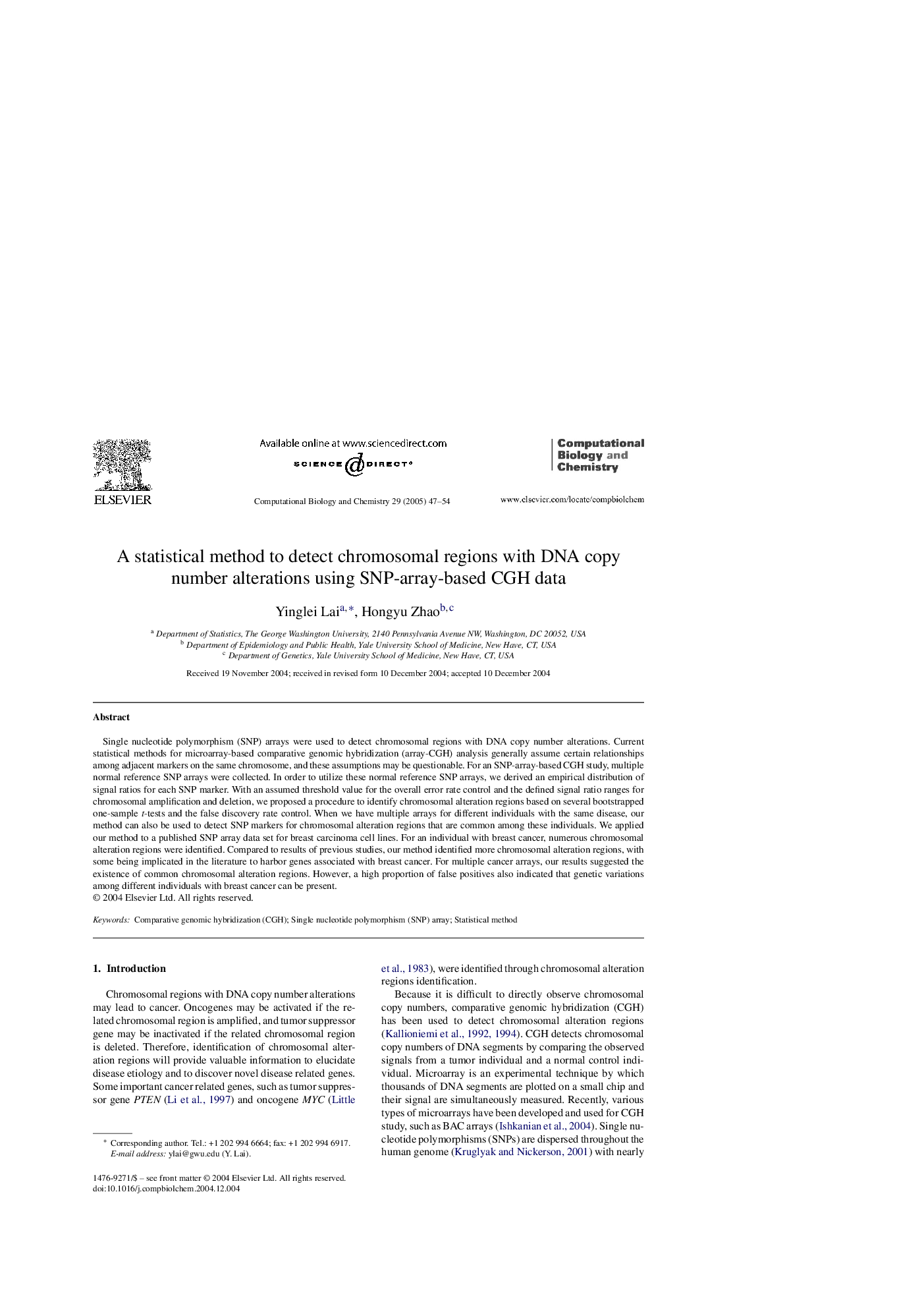| Article ID | Journal | Published Year | Pages | File Type |
|---|---|---|---|---|
| 10231990 | Computational Biology and Chemistry | 2005 | 8 Pages |
Abstract
Single nucleotide polymorphism (SNP) arrays were used to detect chromosomal regions with DNA copy number alterations. Current statistical methods for microarray-based comparative genomic hybridization (array-CGH) analysis generally assume certain relationships among adjacent markers on the same chromosome, and these assumptions may be questionable. For an SNP-array-based CGH study, multiple normal reference SNP arrays were collected. In order to utilize these normal reference SNP arrays, we derived an empirical distribution of signal ratios for each SNP marker. With an assumed threshold value for the overall error rate control and the defined signal ratio ranges for chromosomal amplification and deletion, we proposed a procedure to identify chromosomal alteration regions based on several bootstrapped one-sample t-tests and the false discovery rate control. When we have multiple arrays for different individuals with the same disease, our method can also be used to detect SNP markers for chromosomal alteration regions that are common among these individuals. We applied our method to a published SNP array data set for breast carcinoma cell lines. For an individual with breast cancer, numerous chromosomal alteration regions were identified. Compared to results of previous studies, our method identified more chromosomal alteration regions, with some being implicated in the literature to harbor genes associated with breast cancer. For multiple cancer arrays, our results suggested the existence of common chromosomal alteration regions. However, a high proportion of false positives also indicated that genetic variations among different individuals with breast cancer can be present.
Related Topics
Physical Sciences and Engineering
Chemical Engineering
Bioengineering
Authors
Yinglei Lai, Hongyu Zhao,
